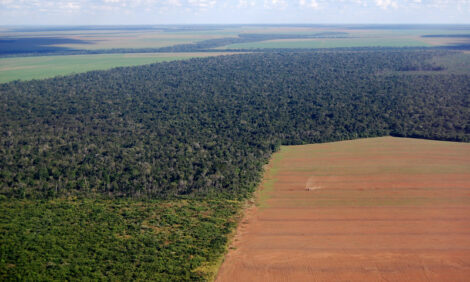



Mounting Concern over African Swine Fever in Estonia
ANALYSIS - Concern is mounting over the rapid increase in the number of cases of African swine fever in the Baltic States in northern Europe.The Russian veterinary authority, Rosselkhoznador, said that between January last year and May 2015 there had been 403 cases of the disease reported in the four affected countries – Estonia, Latvia, Lithuania and Poland.
However, by August the number of cases had more than doubled to 930.
The concern is increasing because the incidents that were initially mainly found in the wild boar population have now moved more and more into domestic pig production.
And now there are fears that the carcases of diseased animals are not being disposed of properly and infected material could be leeching into the water courses and contaminating lakes and rivers.
Rosselkhoznador said: “The increasing the number of new outbreaks in the summer months confirms the trend of seasonal incidence of ASF among both domestic and wild animals.
“According to numerous observations, including those from Russian scientists, the highest number of outbreaks are seen in the summer months between June-August every year.”
The veterinary authority said the problem is made worse because during the summer many pigs are traded and the spring months are traditionally the time when piglets are fattened in Eastern Europe.
The Russian scientists are also predicting a second autumn wave of increased incidents of African swine fever between October and November, because of the rise in slaughtering of pigs at the start of the winter months.
Rosselkhoznador has called for enlarged buffer zones round the affected areas inn the EU stretching out between 100 and 150 kilometres to minimise the risk of the spread of the disease.
Rosselkhoznador said there have also been reports that biosecurity and veterinary and sanitary regulations have been ignored in the disposal of carcases.
The veterinary agency said that in Estonia about 3000 pig carcases had been dumped in a burial ground on the shores of Lake Peipsi near Mustvee and not properly buried.
“There is an impression that in Tallinn people do not have a clue about the threats posed by the cemetery in the coastal zone of one of the largest freshwater bodies in Europe,” Rosselkhoznador said.
“Even a layman can understand that there is no guarantee that sooner or later decomposed products will not fall into the lake.”
There are also concerns that other animals such as wolves and bears would dig up the carcases and spread the disease across the region.
The fears in Russian are that the disease could spread across the lake because it is a border with Russia and is used as a reservoir for the Pskov region.
“Time has shown that the introduction of the temporary restrictions by Rosselkhoznador on import of pig products from the EU was a timely and reasonable step to prevent the penetration of the ASF pathogen into the territory of Russia and the Customs Union,” Rosselkhoznador said.
This month Russia has reported new cases of the disease in the Pskov region among wild boar and also further cases in the Oryol region.
The Estonian authorities said that they have control measures to ensure that the ground water is protected when pig carcases are buried.
The Estonian agriculture ministry said that a total of 3070 animals had been buried near the farm, on a site authorised by the Environment Agency, the landlord and the RMK Ministry of the Environment.
The environment agency said that carcases cannot be buried on poorly protected areas and the ground water has to be under at least 10 metres of clay or 40 metres of sand or gravel.
It added that it would be taking water samples in the area to ensure that there had been no contamination.
The Estonian ministry of agriculture has also stepped up its surveillance and control measures to tackle the outbreaks of African swine fever.
It has initiated new zones for the hunting of wild boar and it is monitoring closely the handling and distribution of wild boar meat to ensure the disease does not spread.
It is introducing a special label ensuring the integrity of wild boar meat that is being sold and all wild boar shot in the swine fever risk areas has to be tested for the disease.
The ministry said that it expects to see a reduction in the wild boar population of 29,600 by setting quota targets.






